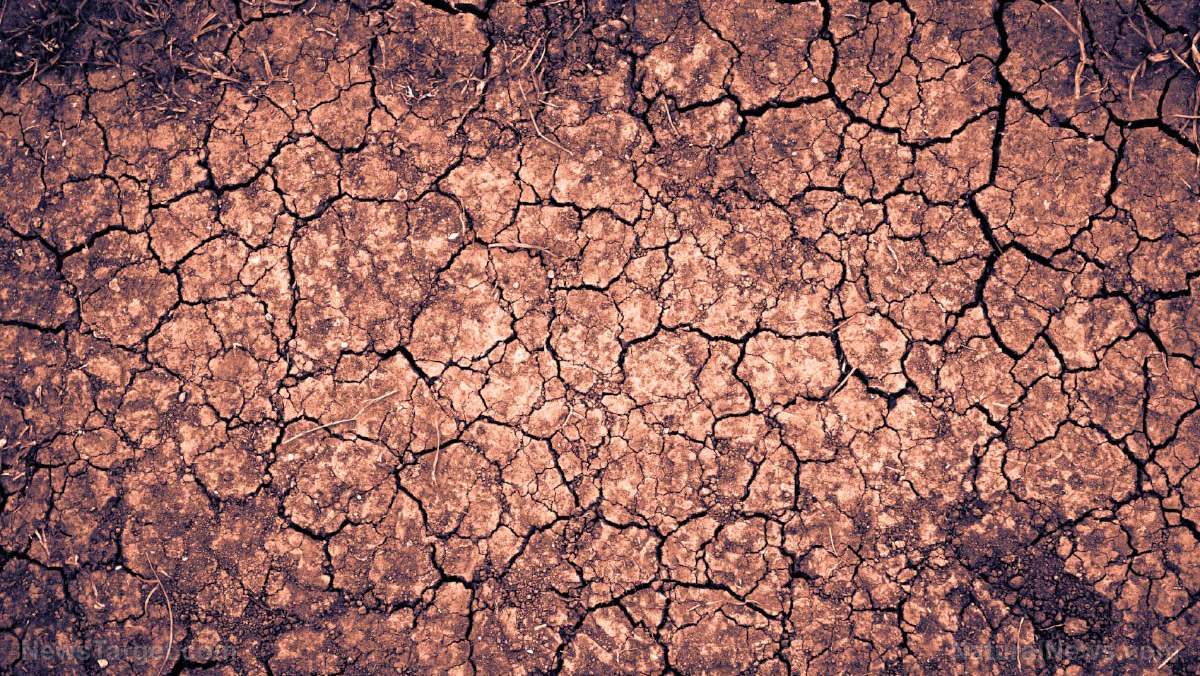New islands, sunken ships and lost marine equipment emerge as Mississippi River continues to dry up
11/07/2022 / By Belle Carter

New islands, sunken ships and a vast array of lost marine equipment have emerged as drought continues to dry up the Mississippi River.
The receding waters along the main river of the second-largest drainage system in North America recently revealed new and old treasures, including an old casino riverboat called Diamond Lady Riverboat in Lake McKellar.
The 31-year-old boat, which was christened in Iowa in 1991 by Vanna White, is no longer floating and is one of the many boats stuck in the mud in Memphis as the river hits record-low water levels. The Diamond Lady was stored in Lake McKellar in 2008 and sank in 2021 during a freeze.
Captain William Lozier, president of Memphis River Boats, said the relics found in the water are basically “dinosaurs” of the past. “It’s not every day you come by and you see devastation like this, a lot of the boats here and boats at other marinas are on the ground and it’s a very surreal sight,” he noted.
According to one fisherman, the water level has never been like this. “It’s practically a boat desert as you can see. I’m hoping that we get much, much rain.”
The Army Corps of Engineers already installed a barrier made of sediment that stretches across the riverbed and serves as a speed bump of sorts last month. They also conducted dredging to prevent more barges from becoming stuck. In addition, the authority managing the Tennessee River system said that it would open two dams.
The drought already messed up drinking water, economic and recreational activities
According to reports, the water level in some places in lower Mississippi has fallen below records set more than 30 years ago. This condition has crippled one of the most important waterways in the country and has jeopardized the quality of drinking water in the area.

It seems that rain would only be the source of relief, but weather forecasters believe that weather conditions in the coming weeks and months are not likely to be favorable.
“We have seen disasters regarding hurricanes, we have seen disasters regarding tornadoes,” said Errick D. Simmons, the mayor of Greenville, Mississippi, a port city of roughly 28,000 people in the Delta region. “But we haven’t seen a historic drought like we’re seeing on the Mississippi.”
Plaquemines Parish, a community in New Orleans, is not under a boil water advisory, but health officials are telling up to 3,000 residents with heart health issues not to drink the water.
“It’s salty. You can smell the salt content,” Kirk Lepine, community president of Plaquemines Parish, told CNN in a phone interview. “It is not suitable for people who have health risks.”
The saltwater made its way into the community’s water supply because water from the Gulf of Mexico has poured into the river. Because water levels in the river are so low, it’s flowing slower than usual, which has made it harder to keep the saltwater out, the media portal said.
The low water level has already disrupted barge traffic and capacity. According to the Coast Guard, eight barges had run aground in the river, getting stuck in sand and mud that the barges would have easily sailed over last year.
Barges had to carry about 20 percent less cargo to avoid running aground, which greatly impact the already messed up supply chains. This has slowed down fertilizer and grain shipments to farmers across several states before the incoming winter freeze. Regional drought conditions also have made it impossible to pass for barges carrying the fall harvest of soybeans, corn and other commodities from farm to market. (Related: Barges “dead in the water” in drought-stricken Mississippi River; supply chains collapsing.)
Meanwhile, recreational activities have also shifted along the Mississippi River. In Missouri, locals are able to walk along what is now a semi-exposed riverbed to Tower Rock, a rock formation in the river. Some marinas in Tennessee have water levels so low, the boats are now sitting in a few inches of muddy water.
Mississippi River’s main stem stretches some 2,350 miles from headwaters in Minnesota to the Gulf of Mexico, touching 10 states and then branching out into a web of tributaries. Its watershed covers 40 percent of the continental United States.
Visit CleanWater.news for more news related to the disruption of clean water supply in areas along the Mississippi River.
Watch this video about climate engineering causing rivers across the U.S. to dry up.
This video is from the TruthBeTold channel on Brighteon.com.
More related stories:
Parts of Mississippi River forced to CLOSE due to worsening drought crisis.
Mississippi River drought wreaks havoc across America’s supply chains.
Massive bean piles appearing along Mississippi River as barges can’t navigate shrinking river.
Sources include:
Submit a correction >>
Tagged Under:
barges, chaos, clean water, Climate, Colorado River, disaster, drinking water, Drought, Ecology, environment, Mississippi River, panic, rationing, salt water, scarcity, tap water, transportation, water shortage, water supply, weather terrorism
This article may contain statements that reflect the opinion of the author





















